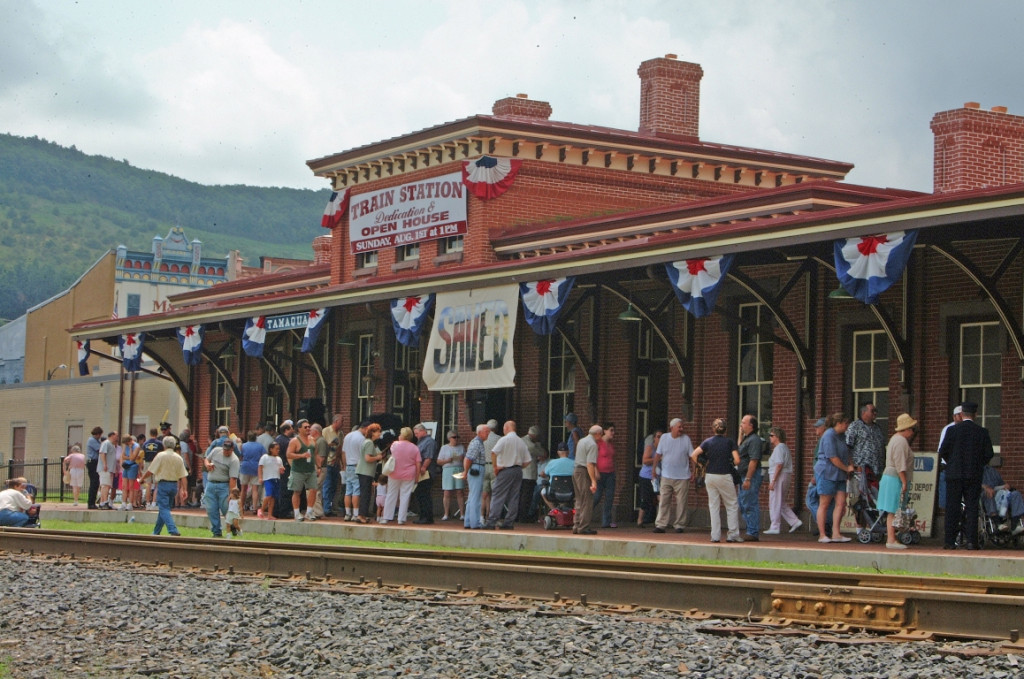by Mike Piaskowski, Pennsylvania Dept. of Conservation and Natural Resources
As Pennsylvanians, we are beyond fortunate to live in a place rich with heritage. Our ridges, valleys, plateaus and waterways lured natives and settlers alike to bountiful opportunities and un-imaginable challenges.
Our landscape has repeatedly played host to significant events that have stitched the fabric of our great nation. As a result, we are left with a legacy that deserves to be celebrated. Moreover, our legacy is so unique, powerful, and robust that it affords us the opportunity to harness our shared history and use it as a vehicle to enrich our core communities, empower our citizens, and improve our quality of life. Enter the Pennsylvania Heritage Areas Program!
Established in 1989 by the Pennsylvania Department of Community Affairs (now PA Department of Conservation and Natural Resources), the PA Heritage Areas Program is a key component of one of the state’s largest industries – tourism. Through the program, the state’s officially designated Heritage Areas receive funding, planning assistance, and oversight designed to promote innovative community revitalization and economic development through tourism, enhancing visitor experiences, sustaining collaborative public-private partnerships, and encouraging the conservation of each region’s natural, historic, scenic and recreational resources.
The Lackawanna Heritage Valley began operation in 1991 as Pennsylvania’s first Heritage Area. Designated in 2005, The Pennsylvania Route 6 Heritage Corridor is PA’s youngest Heritage Area. Twelve organizations are currently enrolled in Pennsylvania’s program. Each one spans a significant geographic region. These regions serve as investment areas where funding and technical assistance are provided to grass roots partner organizations.
- Oil Region Alliance
- Lumber Heritage Region of Pennsylvania
- Pennsylvania Route 6 Heritage Corporation
- Endless Mountains Heritage Region
- Lackawanna Heritage Valley
- Delaware & Lehigh National Heritage Corridor
- Schuylkill River Greenway Association
- Susquehanna Gateway Heritage Area
- Allegheny Ridge Corporation
- Lincoln Highway Heritage Corridor
- Rivers of Steel
- National Road Heritage Corridor
The Pennsylvania Heritage Areas were established on a platform of regional collaboration and it is a model that they continue to employ in their daily operations. The power of the program truly lies in the cultivation and establishment of partnerships. An interesting analogy is one of a hand with four fingers and a thumb, where the Heritage Area is the thumb and each of the four fingers represent a different community entity or asset. In this analogy, the thumb (Heritage Area) is the only digit that can nimbly touch all of the others. For example, the Lackawanna Heritage Valley was recently recognized for their work in establishing the “Heritage Valley Roundtable.” The Roundtables, which are held monthly, serve as a forum for community leaders from all sectors to present initiatives, pull resources, and coordinate cooperation. Over two dozen organizations actively participate because they see, and reap, the benefits. This is just one example of a single collaborative program in one Heritage Area. Each of them excels at establishing diverse partnerships within their respective landscapes.
Several Heritage Areas have become leaders in the development and stewardship of major land and water trail systems along historic routes. These trail systems have proven themselves to be economic windfalls for their host communities. For example, the Rails-to-Trails Conservancy recently completed an economic impact study of the Delaware & Lehigh Trail, which is a major initiative of the Delaware & Lehigh National Heritage Corridor. The 2013 study documents that the trail contributes $19 million annually to the regional economy. This incredible resource would simply not exist if not for the hard work and dedication of the Delaware & Lehigh Heritage Corridor.
The examples given here are but a small sampling of the endless benefits that Pennsylvania’s Heritage Areas provide to our commonwealth. For more information on your Pennsylvania Heritage Areas Program visit the Department of Conservation and Natural Resources’ website
Mike Piaskowski is a Section Chief within the Pennsylvania Department of Conservation and Natural Resources, Bureau of Recreation and Conservation. He has been administering Pennsylvania’s Heritage Area program since May of 2012.
Comment Policy
PHMC welcomes and encourages topic-related comments on this blog. PHMC reserves the right to remove comments that in PHMC’s discretion do not follow participation guidelines.
Commenters and Comments shall be related to the blog post topic and respectful of others who use this site.
Commenters and Comments shall not: use language that is offensive, inflammatory or provocative (this includes, but is not limited to, using profanity, obscene, or vulgar comments); disparage other commenters or people; condone illegal activity; identify the location of known or suspected archeological sites; post personal information in comments such as addresses, phone numbers, e-mail addresses or other contact details, which may relate to you or other individuals; impersonate or falsely claim to represent a person or an organization; make any commercial endorsement or promotion of any product, service or publication.
If you would like to comment on other topics not related to this blog post but related to PHMC, please fill out the PHMC Contact Us Form.
